Hey, there fellow plumbing enthusiasts!
Are you tired of using subpar plumbing tools that break on you in the middle of a job or just plain don’t get the job done? Well, fear not – we’re here to help you find the best plumbing tools on the market. So sit back, relax, and let us help you on your quest for some high-quality tools. Trust me, your toolbox (and your clients) will thank you.
Plumbing hand tools
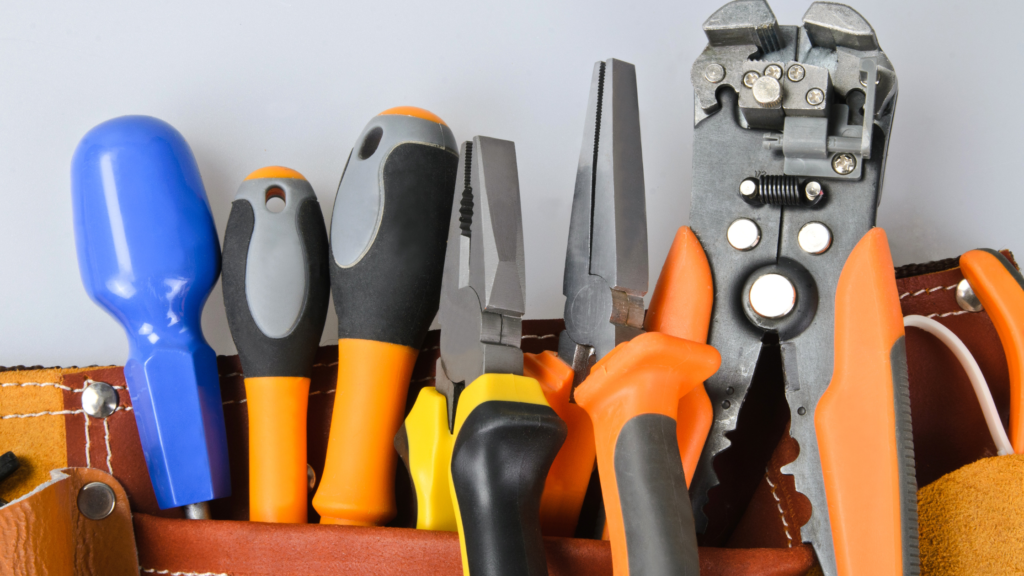
These trusty plumbing tools are the backbone of any plumbing toolkit, and they can be used for a wide range of tasks, from tightening bolts and nuts to cutting pipes and fittings. In this section, we’ll take a closer look at some of the best hand tools for plumbers, including pipe wrenches, pliers, adjustable wrenches, screwdrivers, utility knives, and basin wrenches.
| Hand Tools | Description | Uses |
|---|---|---|
| Pipe wrenches | Tools for gripping and turning pipes and fittings with adjustable jaws | Installing or repairing pipes, removing stuck pipes and fittings |
| Pliers | Tools for gripping, cutting, and bending | Gripping and turning pipes and fittings, cutting wire, bending metal |
| Adjustable wrenches | Versatile tools with adjustable jaws for tightening or loosening nuts and bolts | Assembling and disassembling pipes and fittings, tightening or loosening bolts and nuts on fixtures and appliances |
| Screwdrivers | Tools for turning screws | Assembling and disassembling fixtures and appliances, repairing or replacing screws on plumbing components |
| Utility knives | Sharp blades for cutting a variety of materials | Cutting pipes and fittings, trimming excess material, opening boxes and packages |
| Basin wrenches | Specialized tools for tightening and loosening nuts and bolts in hard-to-reach places | Installing or repairing fixtures and appliances in tight spaces |
| Pipe cutters | Specialized tools for cutting pipes | Cutting pipes to length or removing damaged sections of pipe |
Pipe wrenches
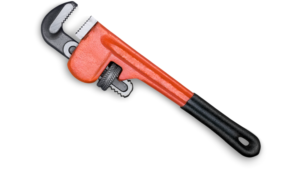
Pipe wrenches are essential tools for any plumber. They are used for gripping and turning pipes and fittings, and have adjustable jaws that can be tightened or loosened to fit different pipe sizes. Pipe wrenches are designed with a long handle and sturdy construction, making them ideal for applying high levels of torque. They are commonly used for installing or repairing pipes, as well as for removing stuck pipes and fittings.
Pliers
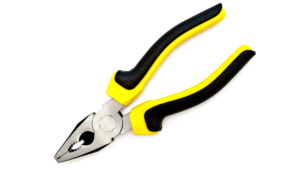
Pliers are another essential plumbing tool for plumbers. They can be used for a variety of tasks, including gripping, cutting, and bending. There are several types of pliers, including slip-joint pliers, tongue-and-groove pliers, and needle-nose pliers, each designed for specific tasks. Slip-joint pliers are commonly used for gripping and turning pipes and fittings, while tongue-and-groove pliers are used for gripping and turning larger objects. Needle-nose pliers are useful for reaching into tight spaces and gripping small objects.
Adjustable wrenches
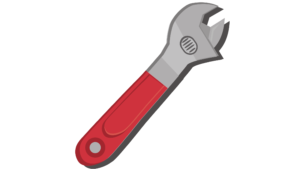
Adjustable wrenches, also known as crescent wrenches, are versatile tools that can be used for a variety of tasks. They have adjustable jaws that can be tightened or loosened to fit different sizes of nuts and bolts. Adjustable wrenches are commonly used for assembling and disassembling pipes and fittings, as well as for tightening or loosening bolts and nuts on fixtures and appliances.
Screwdrivers
Screwdrivers are simple but essential tools for plumbers. They are used for turning screws and come in a variety of types, including flat-head and Phillips-head. They can also come in different sizes to fit different screws. Screwdrivers are commonly used for assembling and disassembling fixtures and appliances, as well as for repairing or replacing screws on various plumbing components.
Utility knives
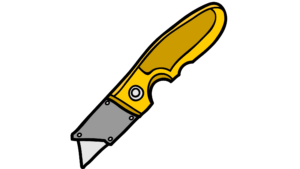
Utility knives are sharp blades that can be used for cutting a variety of materials, including plastic pipes and sheetrock. They often have retractable blades for safety. Utility knives are commonly used for cutting pipes and fittings, as well as for trimming excess material or opening boxes and packages.
Basin wrenches
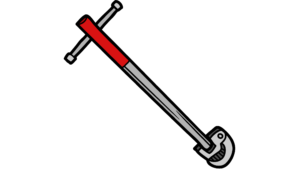
Basin wrenches are specialized plumbing tools that are used for tightening and loosening nuts and bolts in hard-to-reach places, such as under sinks. They have long, narrow handles and adjustable jaws that can be tightened or loosened to fit different sizes of nuts and bolts. Basin wrenches are essential for installing or repairing fixtures and appliances that are located in tight spaces.
Pipe cutters
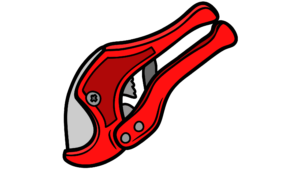
Pipe cutters (also known as tubing cutters) are specialized tools that are used for cutting pipes. They can be used to cut a variety of materials, including copper, plastic, and steel pipes. There are several types of pipe cutters, including manual cutters, ratcheting cutters, and power cutters. Manual cutters are operated by hand and use a scissor-like action to cut the pipe, while ratcheting cutters use a lever action to cut the pipe. Power cutters, such as reciprocating saws and circular saws, use electricity or battery power to cut the pipe. Pipe cutters are commonly used for cutting pipes to length or for removing damaged sections of pipe.
Plumbing power tools
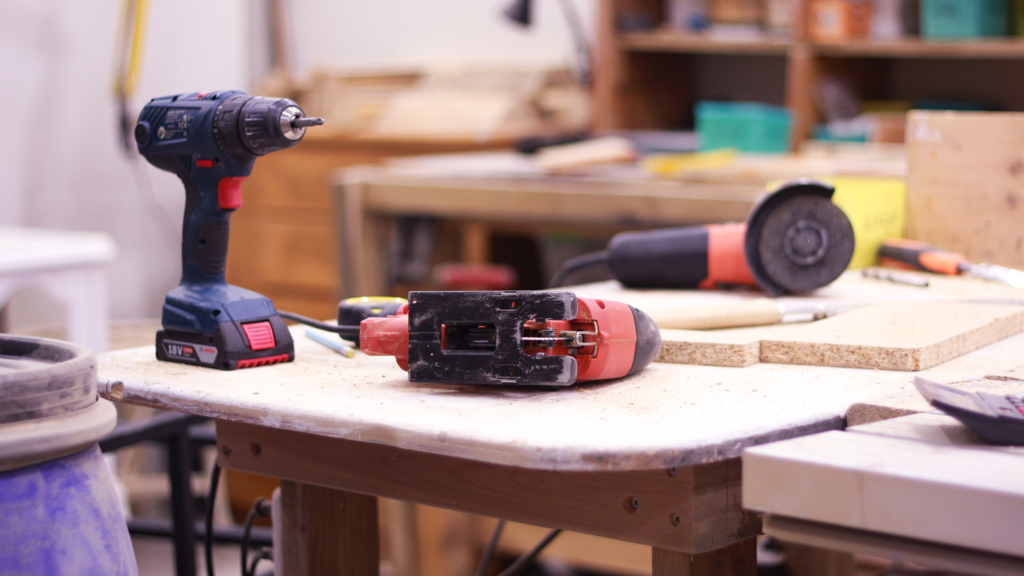
Power tools are an essential part of any plumber’s toolkit. These specialized tools are designed to make tasks easier and more efficient, and they can be used for a wide range of tasks, from cutting and drilling to bending and fusing pipes. In this section, we’ll take a closer look at some of the best power tools for plumbers.
| Power Tools | Description | Uses |
|---|---|---|
| Cordless drills | Drills for drilling holes and driving screws | Drilling holes, driving screws in tight or hard-to-reach spaces |
| Reciprocating saws | Saws with back-and-forth motion for cutting | Cutting pipes, wood, and metal |
| Circular saws | Saws with circular blades for cutting | Cutting pipes, wood, and metal |
| Power augers | Tools for clearing clogs in drains and pipes | Clearing clogs in drains and pipes |
| Pipe threading machines | Machines for creating threads on pipes | Creating custom-length pipes, repairing damaged threads on pipes |
| Hole saw kits | Saws with round blades used to cut holes in materials | Used to create holes for pipes and other plumbing fixtures, such as cutting a hole in a wall or ceiling to install a plumbing vent. |
| Press fitting systems | A type of plumbing fitting that uses a mechanical press to create a secure, permanent connection between pipes | Used in commercial and industrial plumbing applications to create pipe connections |
Cordless drills
Cordless drills are useful for drilling holes in walls and other materials, as well as for driving screws. They are convenient because they can be used without an electrical outlet, making them ideal for use in tight or hard-to-reach spaces. Cordless drills come in different sizes and voltages and can be fitted with a variety of drill bits and screwdriver bits to suit different tasks.
Reciprocating saws
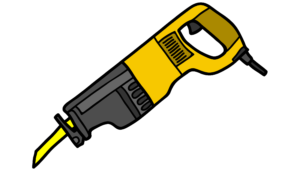
Reciprocating saws are saws that use a back-and-forth motion to cut through materials. They are commonly used for cutting pipes, as well as for cutting through other materials such as wood and metal. Reciprocating saws come in corded and cordless models and can be fitted with a variety of blade types to suit different tasks.
Circular saws
Circular saws are saws that use a circular blade to cut through materials. They are commonly used for cutting pipes, as well as for cutting through other materials such as wood and metal. Circular saws come in different sizes and voltages and can be fitted with a variety of blade types to suit different tasks.
Power augers
Power augers, also known as drain snakes, are specialized tools that are used for clearing clogs in drains and pipes. They use a long, flexible cable with an auger or cutter at the end to break up and remove blockages. Power augers come in different sizes and lengths to suit different types of drains and pipes.
Pipe threading machines
Pipe threading machines are used for creating threads on the ends of pipes. They are commonly used for creating custom-length pipes or for repairing damaged threads on pipes. Pipe threading machines come in different sizes and styles to suit different types of pipes.
A hole saw kit is a tool that consists of a circular saw blade with a pilot drill bit in the center and a mandrel that holds the blade in place. It is used to cut holes through a variety of materials, such as wood, plastic, and metal.
Press fitting systems
Press fitting systems are a type of plumbing fitting that uses a mechanical press to create a secure, permanent connection between pipes. Press fitting systems are commonly used in commercial and industrial plumbing applications, as well as some residential applications.
Press fitting systems consist of a fitting and a press tool. The fitting has a rounded collar and a sealing element, such as an O-ring, that seals against the pipe when the connection is made. The press tool applies pressure to the fitting, compressing the sealing element and creating a watertight seal between the fitting and the pipe.
There are several advantages to using press fitting systems in plumbing. One advantage is that they are quick and easy to install, as they do not require soldering or welding. Press fitting systems are also very reliable and produce a strong, durable connection. They are also resistant to corrosion and can be used with a variety of different pipe materials, including copper, stainless steel, and PEX.
Hole saw kits
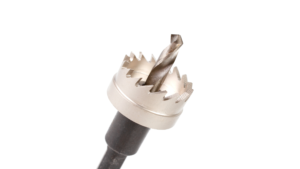
Hole saw kits are commonly used in the plumbing industry to create holes for pipes and other plumbing fixtures. For example, a plumber may use a hole saw kit to cut a hole in a wall or ceiling to install a plumbing vent or to create an opening for a pipe to pass through.
Hole saw kits come in a range of sizes, with the size of the hole saw blade corresponding to the size of the hole it will create. Some hole saw kits also come with a variety of interchangeable blades in different sizes, allowing the user to choose the appropriate size for the job at hand.
Hole saw kits are a useful tool for plumbers as they allow for precise, clean cuts through a variety of materials. They are also relatively quick and easy to use, making them a convenient choice for many plumbing tasks.
Plumbing measuring and layout tools
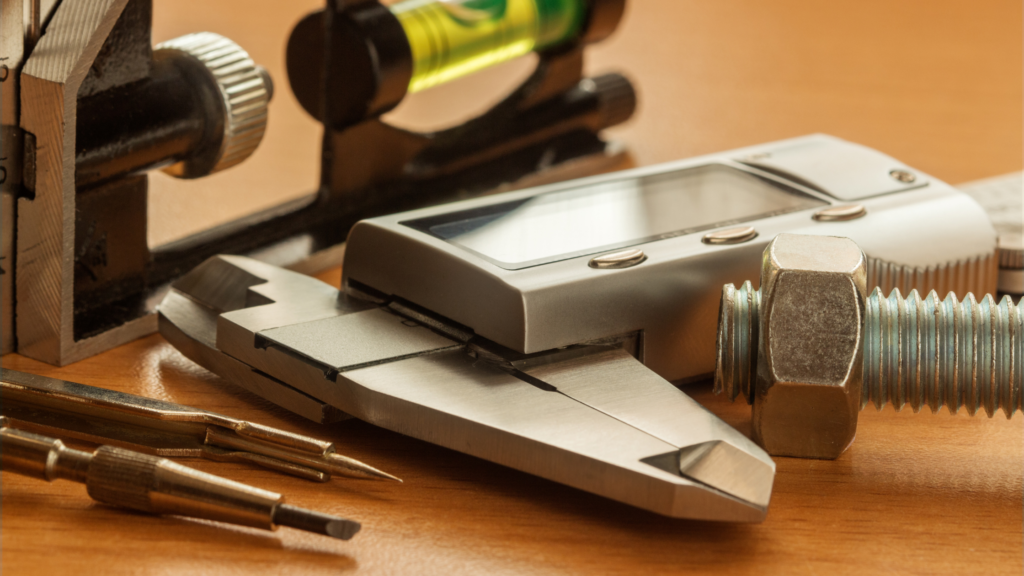
Accuracy is key when it comes to plumbing, and that’s where measuring and layout tools come in. These specialized tools help you ensure that your work is precise and properly aligned, saving you time and frustration in the long run. In this section, we’ll take a closer look at some of the best measuring and layout tools for plumbers.
| Measuring and Layout Tools | Description | Uses |
|---|---|---|
| Tape measures | Measuring tool with a long, flexible tape | Getting accurate measurements of pipes, fittings, and other components |
| Levels | Tools for ensuring that pipes and components are level and aligned | Ensuring that pipes and components are level and aligned |
| Square | Tool for ensuring that pipes and components are at a 90-degree angle | Ensuring that pipes and components are square when installing pipes and fittings |
Tape measures
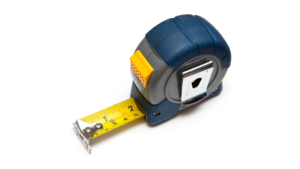
A good tape measure is a plumber’s best friend. It’s essential for getting accurate measurements of pipes, fittings, and other components. Look for a tape measure with a sturdy metal case and a long, flexible tape that can easily reach into tight spaces.
Levels
Levels are used for ensuring that pipes and other components are level and properly aligned. They come in a variety of sizes and styles, including traditional bubble levels and digital levels.
Square
A square is a tool used for ensuring that pipes and other components are at a 90-degree angle. It’s especially useful when installing pipes and fittings that need to be perfectly square.
Plumbing test equipment
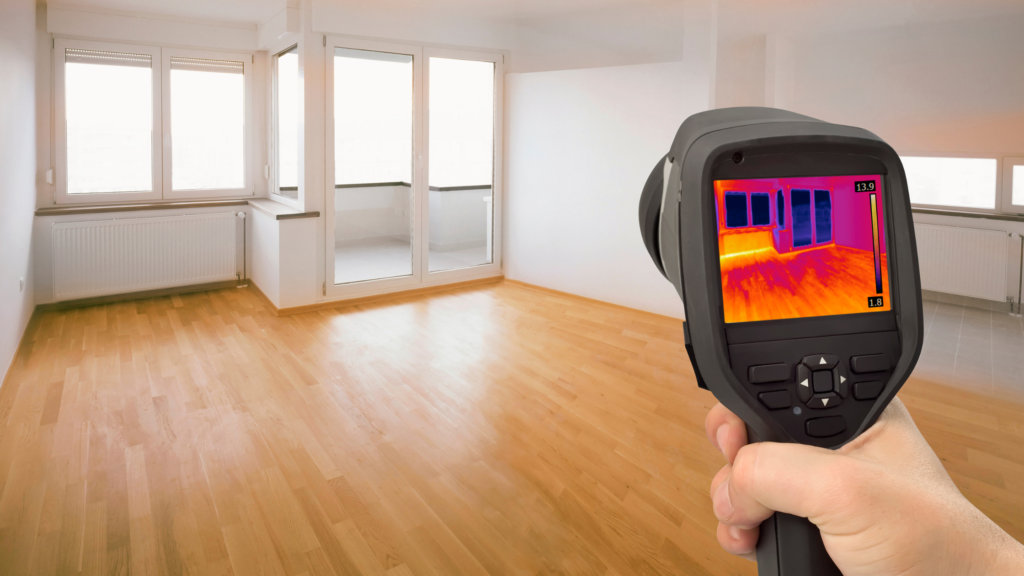
As a plumber, you know that sometimes things don’t go as planned. Pipes leak, drains clog, and appliances break down. That’s where plumbing test equipment comes in. These specialized tools help you diagnose and troubleshoot problems, so you can get the job done right the first time. . In this section, we’ll take a closer look at some of the best plumbing test equipment.
| Plumbing Test Equipment | Description | Uses |
|---|---|---|
| Drain inspection cameras | Flexible cable with a camera on the end, used to inspect pipes for blockages, damage, or other issues | Inspecting pipes & drains for problems |
| Water pressure gauges | Tools for testing water pressure in pipes and appliances | Testing water pressure in pipes and appliances |
| Pipe locators | Specialized tools that use electromagnetic fields to locate underground pipes | Locating underground pipes |
| Leak detectors | Specialized tools used for detecting leaks in pipes, appliances, and other plumbing components | Detecting leaks in pipes and appliances |
Drain inspection cameras
Drain inspection cameras are handy little devices like tiny robotic surgeons for your pipes. They consist of a flexible cable with a camera on the end, which can be inserted into pipes to inspect the inside for blockages, damage, or other issues.
Water pressure gauges
Water pressure gauges are used for testing the pressure of water in pipes and appliances. They come in a variety of sizes and styles, including digital and analog gauges.
Pipe locators
Pipe locators are specialized plumbing tools that use electromagnetic fields to locate underground pipes. They are especially useful when working on older homes or when dealing with pipes that are buried deep in the ground.
Leak detectors
Leak detectors are specialized plumbing tools that are used for detecting leaks in pipes, appliances, and other plumbing components. They come in a variety of sizes and styles, including electronic and chemical leak detectors.
Plumbing Business Tools
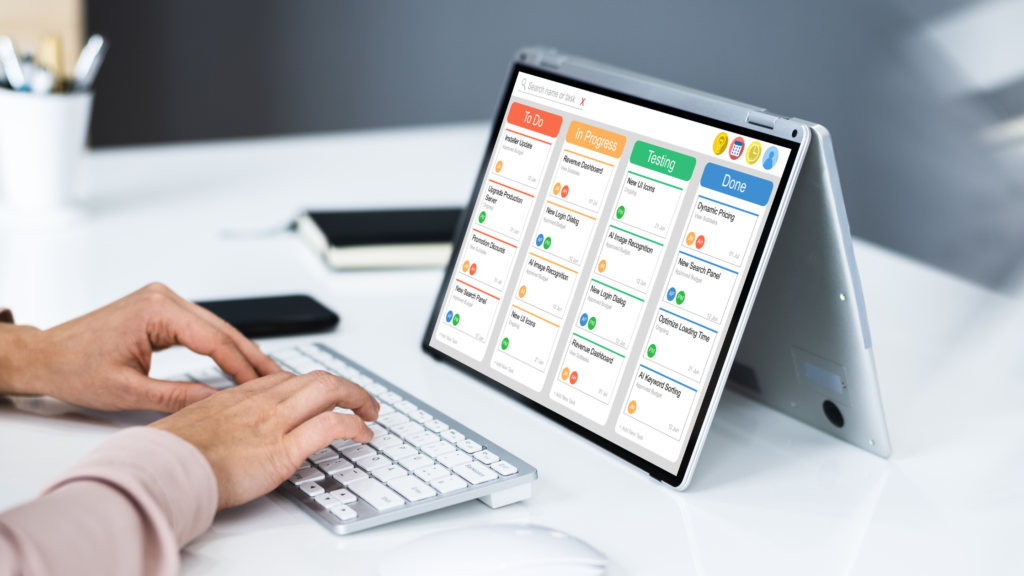
Running a plumbing business takes more than just technical skills – it also requires a range of business plumbing tools and resources. From invoicing and billing to scheduling and dispatch, these tools help you manage and streamline your business operations, as well as improve your customer service and support. In this section, we’ll take a closer look at some of the best plumbing business tools.
| Software | Description | Uses |
|---|---|---|
| Invoicing and billing | Software that helps plumbers create professional invoices and track finances. | Creating invoices for plumbing services and products, managing and tracking finances for the plumbing business, accepting payment for plumbing services online. |
| Scheduling and dispatching | Software that helps plumbers schedule and dispatch technicians. | Scheduling and dispatching technicians to different plumbing jobs, tracking progress and performance of technicians, tracking the location of technicians in real time. |
| Customer relationship management (CRM) | Software that helps plumbers manage customer relationships. | Keeping track of customer information and communication for the plumbing business, managing customer service and support, creating and tracking customer profiles, scheduling and managing appointments for plumbing services, sending personalized emails or texts to customers regarding plumbing services. |
| Inventory management | Software that helps plumbers track and manage inventory of parts and supplies. | Creating custom inventory lists for plumbing parts and supplies, tracking stock levels of plumbing inventory, generating reports on inventory usage for the plumbing business. |
| Estimating and proposal | Software that helps plumbers create accurate estimates and proposals for clients. | Creating custom templates for estimates and proposals for plumbing services, adding materials, labor, and other costs for plumbing projects, creating and tracking multiple estimates and proposals, comparing and analyzing estimates and proposals to find the best options for clients. |
Invoicing and billing software
Invoicing and billing software is an essential tool for any plumbing business. It helps you create professional, accurate invoices and estimates for your customers, and can also help you manage and track your finances. With invoicing and billing software, you can easily create custom templates for your invoices and estimates, add taxes and other charges, and even accept payment online.
Scheduling and dispatching software
Scheduling and dispatching software is a crucial tool for any plumbing business that manages multiple technicians or jobs at once. It helps you schedule and dispatch your technicians to different jobs, as well as track their progress and performance. With scheduling and dispatch software, you can easily create custom schedules, assign technicians to specific jobs, and even track their location in real time.
Customer relationship management (CRM) software
CRM software is a tool that helps you manage and track your relationships with your customers. It helps you keep track of customer information, communication, and interactions, as well as manage your customer service and support. With CRM software, you can easily create and track customer profiles, schedule and manage appointments, and even send personalized emails or texts to your customers.
Inventory management software
Inventory management software is a tool that helps you track and manage your inventory of parts and supplies. It helps you keep track of what you have in stock, what needs to be reordered, and what is running low. With inventory management software, you can easily create custom inventory lists, track stock levels, and even generate reports on your inventory usage.
Estimating and proposal software
Estimating and proposal software is a tool that helps you create accurate, professional estimates and proposals for your customers. It helps you create custom templates for your estimates and proposals, as well as add materials, labor, and other costs. With estimating and proposal software, you can easily create and track multiple estimates and proposals, as well as compare and analyze them to find the best options for your customers.
Overall, plumbing software is an essential tool for any plumbing business. It helps you manage and streamline your business operations, as well as improve your customer service and support. By investing in the right plumbing software, you can save time, increase efficiency, and even grow your business. For more information, check out our guide on what is plumbing software.
Best Plumbing Tools Buyer’s Guide
First things first, let’s talk about quality. You don’t want to skimp on this one, trust me. Cheap plumbing tools may seem like a good deal at first, but they’ll probably break on you in the middle of a job and then you’ll be out both time and money. Go for the good stuff – it’ll save you headaches in the long run.
You want to look for plumbing tools that are made with durable materials and have a solid construction. Also look for tools with features like corrosion-resistant finishes, ergonomic handles, and strong, lockable jaws. These features may cost a bit more, but they’ll make your job easier and ensure that your tools last for years to come.
Ultimately, the “good stuff” refers to plumbing tools that are made with care and attention to detail, using materials and construction techniques that are designed to withstand the wear and tear of regular use.
Next up, consider the brand reputation. It’s important to consider the track record of different plumbing tool manufacturers to make sure you’re getting the best plumbing tools possible. Some brands are known for producing high-quality tools that are built to last, while others may have a less reliable reputation.
A few brands that are known for their reputation in the plumbing industry include RIDGID, Milwaukee, and Klein Tools. These brands are known for their durability, performance, and attention to detail. They also often offer warranties on their products, which can be a major selling point.
In comparison to other brands, these reputable brands tend to use higher-quality materials and construction techniques in their tools. They also often have a strong focus on innovation, regularly introducing new and improved products to the market. Overall, choosing a brand with a strong reputation can give you peace of mind and ensure that you are getting a product that is built to last.
Price is always a factor to consider when shopping for plumbing tools, but it shouldn’t be the only one. It’s important to balance price with other factors like quality, brand reputation, and versatility. That being said, there are a few ways to save money on plumbing tools.
One way to save money is to wait for sales or promotions, such as those that often occur around holidays. Many plumbing tool manufacturers offer discounts and deals on their products during these times, so it can be a good opportunity to save some cash.
Another way to save money is to sign up for the email list of your favorite plumbing tool brands. Many brands offer exclusive discounts and promotions to their email subscribers, so you might be able to snag a deal that way.
Finally, consider purchasing tools in bulk or as part of a set. Many manufacturers offer discounts when you purchase multiple tools at once, so it can be a cost-effective way to build up your tool collection. Just be sure to only buy tools that you know you’ll actually use – there’s no sense in overloading your toolbox with stuff you’ll never touch.
Versatility is an important factor to consider when choosing plumbing tools, as it can save you both money and space in your toolbox. Rather than purchasing a separate tool for every single task, look for tools that can handle multiple jobs.
For example, a pipe wrench with adjustable jaws can be used to grip a variety of pipe sizes, making it more versatile than a fixed-jaw wrench that can only grip one size. Similarly, a screwdriver with interchangeable bits can be used for a wider range of tasks than a traditional screwdriver with a fixed bit.
In addition to looking for multi-purpose tools, consider purchasing tools that can be used for tasks outside of plumbing as well. For example, a cordless drill can be used for drilling holes in walls, but it can also be used to drive screws and even mix paint. This added versatility can make it a valuable tool to have in your toolbox.
Ease of use is an important factor to consider when choosing plumbing tools, especially if you will be using the tools for long periods of time. Tools that are uncomfortable to hold or difficult to use can quickly become frustrating and can even lead to accidents on the job.
To ensure ease of use, consider the following factors:
- Ergonomics: Look for tools that are designed with ergonomics in mind, such as those with non-slip grips and handles that fit comfortably in your hand. These features can help reduce fatigue and increase comfort while using the tools.
- Weight: Heavier tools can be more tiring to use over long periods of time. Consider choosing lighter tools, especially if you will be using them frequently.
- Leverage: Tools with good leverage, such as pipe wrenches with long handles, can make it easier to apply force and reduce the amount of effort required.
And that’s that! Hopefully, you were able to find this best plumbing tools guide useful and can now make a more informed decision when purchasing plumbing tools. Remember to always take your time and do your research when making any purchase With the right set of tools, you’ll be able to fix most basic plumbing problems quickly and easily. Good luck!